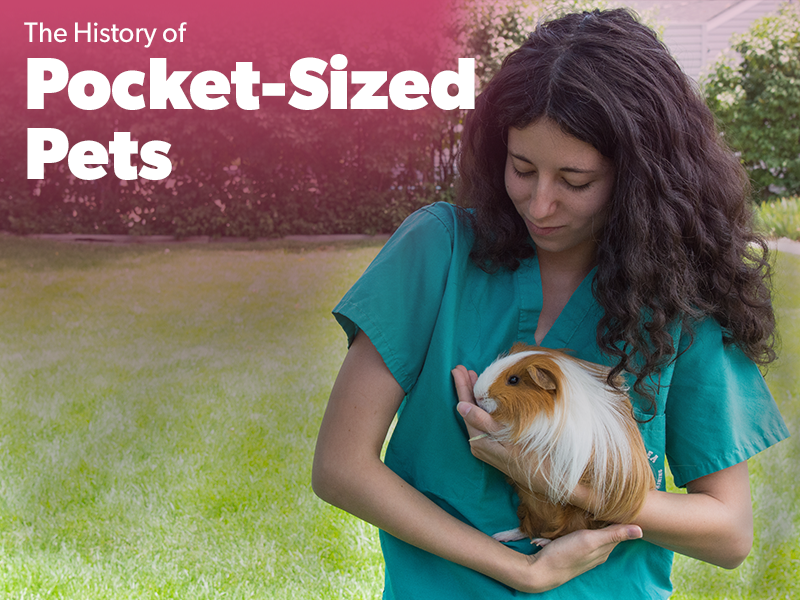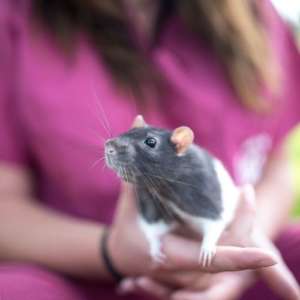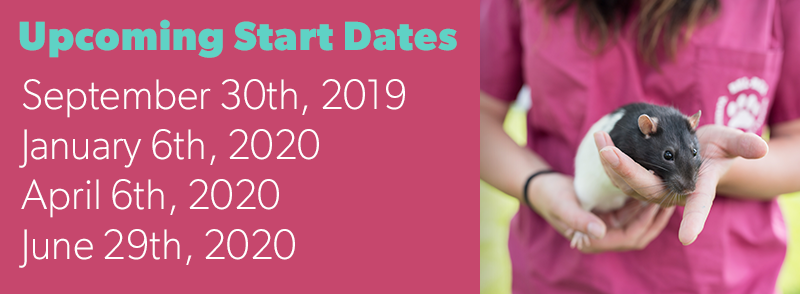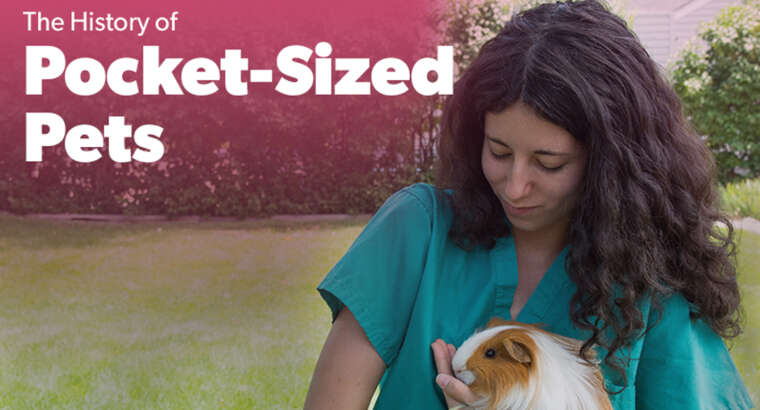
What is a pocket pet? It’s a cute, furry animal that is small enough to fit in your pocket. How long have these animals been our furry friends?

Gerbil
The first ‘domesticated’ gerbil might have been that of Genghis Khan. Legend has it, a gerbil saved Kahn by biting the foot of an attempted assassin. The gerbil eventually made its way to Europe in 1867, but didn’t become a popular pet in the United States until the 1950s.
 Guinea Pig
Guinea Pig
Guinea pigs are normally found in South America, where they were first domesticated around 2000 BC in the Andes. Originally, they were bred for food, however, some may have been kept as family pets for children.
 Hamster
Hamster
Hamsters are adorable, nocturnal animals historically found in the region surrounding Aleppo, Syria. Zoologists brought the first family of Golden Hamsters back to the United States in 1930. Later, more were found and brought to America where they became the household pet we know today.
 Mouse
Mouse
Some records show evidence of pet mice in a Neolithic Turkish community over 8,000 years ago. Over years of travel by land and sea, they became both pets and pests. Whether you consider them pets or pests, they have followed human development for thousands of years and are quite intelligent.
 Rat
Rat
Brown or Norway Rats were domesticated into ‘Fancy’ rats in the early 1800s, driving out the indigenous Black Rat in Europe. The National Mouse Club, a group of wealthy individuals who deeply admired pet rats, was founded in England in 1895.
 Sugar Glider
Sugar Glider
Sugar Gliders are nocturnal marsupials native to Australia, Indonesia, and Papua New Guinea. These beloved little critters were brought to the United States as pets in the 1990s.
Come see the pocket pets that you will work with on-site during a tour of Bel-Rea Institute of Animal Technology!


If you’re passionate about caring for animals, learn why Bel-Rea is the school for you!
- Hands-on Training and Experience on a 6.4 acre campus with credentialed Instructors.
- Small and Large Animal Training Facilities including on-site surgery, radiology and dental suite.
- American Veterinary Medical Association Accredited Program. This accreditation is a requirement in order to take the Veterinary Technician National Exam for credentialing upon graduation.
- Personalized One-On-One Attention from experienced Faculty and Staff.
- Course Curriculum specifically designed to provide the students the skills and opportunities they will need to be successful in the Veterinary field.
- Every Class is offered every quarter and tuition will not fluctuate in cost throughout your education at Bel-Rea with continual enrollment.
- Out-of-State Students qualify for the same tuition rate as In-State Students.
- Financial Aid and Veteran Benefits are available for those who apply and qualify.


